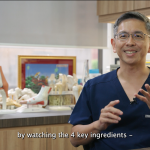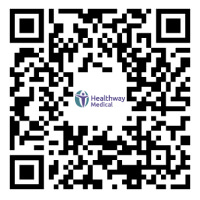What is Prostate Cancer, its Risk Factors and How to Reduce the Risk of Getting Prostate Cancer?
November is Prostate Cancer Awareness month. Prostate cancer is one of the top most common male cancers in the World. Cancer awareness is important as being educated can help us make better lifestyle choices and gain access to prevention and early treatment.
Join us as we share important information by our urologists at UROHEALTH MEDICAL CLINIC (a member of Healthway Medical) about prostate cancer in the month of November in this upcoming series of videos.
First up we have Dr Koh Li-Tsa, Senior Consultant Urologist, on what prostate cancer is, its risk factors and if there is any way we could reduce the risk of getting prostate cancer?
Transcript
0:05
Prostate cancer is cancer of the prostate gland. The prostate is a gland which only men have.
So this walnut-sized gland sits right under the bladder and it surrounds the urethra. The urethra is the channel where urine flows out from. The prostate is responsible for the production of fluid which nourishes and transports sperm.
0:28
So about 1 in 8 men will receive a diagnosis of prostate cancer at some point in their life and this incidence increases with age.
Most cases of prostate cancer actually diagnosed quite early through the screening of prostate specific antigen, otherwise known as PSA, in the blood. Hence many patients um may not experience any symptoms at the time of diagnosis.
0:51
Patients with prostate cancer causing an increase in the overall size of gland may experience difficulty in starting the stream of urination, slow urinary flow, a sensation of being unable to completely empty the bladder, an increase in frequency of passing urine.
However these symptoms are not specific to prostate cancer and they can also be present in men with benign enlargement of the prostate.
Other not-so-common symptoms of prostate cancer would include seeing blood in the urine or blood in the semen. Experiencing bone pain or unexplained weight loss and erectile dysfunction.
1:32
Firstly, age. The risk of prostate cancer increases after the age of 50, but it is rare before 45.
Secondly, race or ethnicity. This prostate cancer condition is more common in African people than in white people, while Asians and Hispanic people have a lower risk compared to white people.
Next, family history. A person with a close relative with a history of prostate cancer has a higher chance of developing it. Then there are patients with genetic factors such as changes to the BRACA1 or BRACA2 genes, who are also at increased risk of developing prostate cancer.
Lastly, diet. Some evidence suggest that high-fat diets may increase the risk of developing prostate cancer.
2:21
Men can try to reduce their risk of developing cancer through the following changes to their lifestyle.
They should try to eat more leafy greens tomatoes, broccoli cauliflower, soy products and try to drink more green tea, because substances in these food may help to protect against developing cancer.
One should try to get regular exercise, at least 10 minutes of sun exposure a day to facilitate vitamin D production. They should try to maintain a healthy weight, quit smoking and reduce alcohol consumption.
2:55
Interestingly, 2 studies have shown that men who had a higher frequency of ejaculation, whether through self-stimulation or through intercourse, were found to be 2/3 less likely to be diagnosed with prostate cancer.
Lastly, certain medications used in the treatment of benign prostatic and enlargement have also been shown to reduce prostate cancer risk by about 25%. However, one should first talk to a urologist about the pros and cons of starting this kind of medication.









